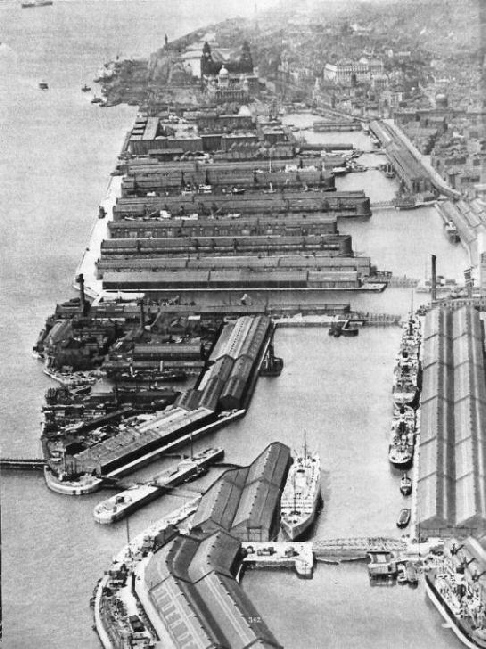
© Shipping Wonders of the World 2012-



Part 11
Part 11 of Shipping Wonders of the World was published on Tuesday 21st April 1936.
It included a centre photogravure supplement featuring the port of Liverpool, which formed part of the article on the Liverpool: A Home of British Shipping.
The Cover
The cover on the current issue is a remarkable view taken from the side of the German express liner Bremen. I found this picture on board, among several thousand others, and decided that this view of the sea itself would not be out of place as a cover.
The Bremen also features on the covers of part 6, part 20 and part 23.
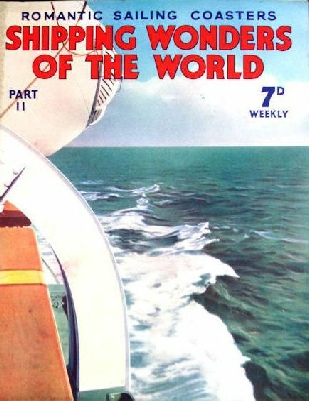
Contents of Part 11
Epics of the Submarines
Exploits of submarines from both sides during the First World War. This article is concluded from part 10.
Racing at Two Miles a Minute
Man’s ability to travel at two miles a minute on water is a wonderful achievement which is a direct result of years of experiment and keen rivalry in international boat racing. This is the story of the racing motor boat from the single horse-power vessel of the last century to the modern 7,800 horse-power Miss America X, with her record speed of 124.86 miles an hour. This chapter not only describes the many amazing international duels for the World’s Speed record, but also includes a wealth of information about the boats which have been driven by celebrities such as Kaye Don, Sir Henry Segrave, and Commodore Gar Wood. The article is by Sidney Howard.
Liverpool: A Home of British Shipping
Liverpool, Great Britain's premier port for exports, had contributed largely to the progress of British overseas trade, and her name is woven into the pattern of maritime history. To-day millions of tons of shipping arrive and depart annually from the docks which are renowned the world over. This story gives a vivid impression of the vast extent and activity of the port. Liverpool claims to handle the largest export trade in Great Britain. In 1933 the total value of imports and export merchandise which passed through this port amounted to over £236,000,000. The Liverpool Docks stretch for six and a half miles along the River Mersey, and the area of the docks and basins is about 477 acres. On the Cheshire side of the river are the Birkenhead Docks - under the same authority - which have a water area of about 182 acres.
This article is the third in the series Great Ports of the World. It includes a photogravure section which is illustrated below.
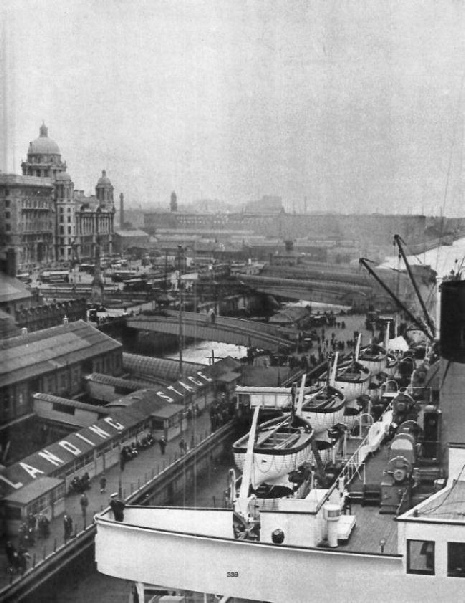
The Landing Stage
THE LANDING STAGE at Liverpool (left), at which the largest vessels can berth at all states of the tide. The first floating stage was built in 1847. The present one was completed in 1876, and extensions have been made since so that its total length is now nearly half a mile. The landing Stage is carried on the water on some 200 iron pontoons. It is held in position by bridges and booms. The deck level is about 6 feet to 8 feet above the water. For ferry passengers fixed gangways are provided; for big ships moveable gangways are used, and high-level bridges, adapted to the towering decks of ocean giants. On different parts of the structure are post, telephone and custom offices.
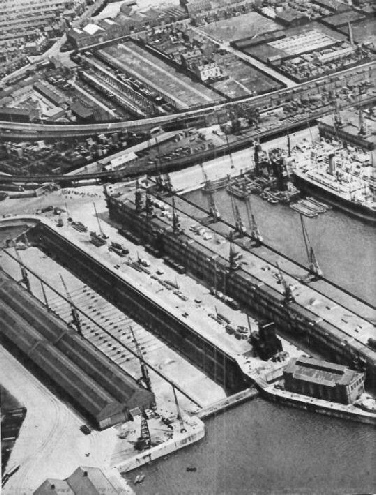
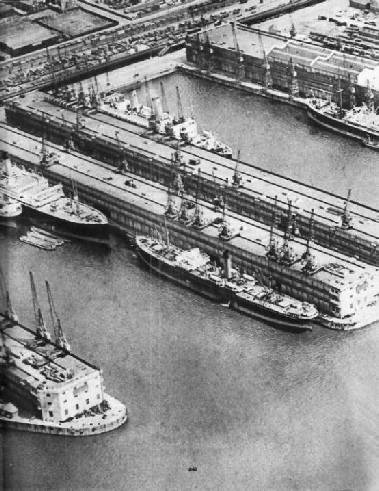
A View of the Gladstone Docks System
Completed in 1927, the Gladstone Graving Dock, used also as a wet dock, cost nearly £500,000 to build, and its water area is 3 acres 2,585 square yards. The main Gladstone Dock - used by the biggest ships visiting Liverpool - has a water area of 24 acres, 3,464 square yards. Of the two branch docks, one has a water area of 11 acres, 3,950 square yards, the other an area of 13 acres 520 square yards.
